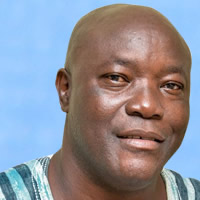Water
Ghana Water Company Limited (GWCL) formerly Ghana Water and sewerage Corporation is responsible for the development conservation of potable water in the Metropolis. The scope of service is now limited to towns with Water & Sanitation.
The availability of portable water and sanitation feasibilities and services is crucial for a healthy human resource. Considering the fact that malaria continue to top the list of top ten diseases in the Metropolis, the importance of water and sanitation services cannot be over emphasised.
Waste Management
The collection, transportation and disposal of solid and liquid waste is the sole responsibility of the Metropolitan Assembly which operates through the Waste Management Departments. The tonnage of waste generated in the Metropolis has been increasing over the years as the population increases.
Solid Waste
The estimated total solid waste generation for SAEMA is 206 tonnes per day (i.e. 75,293 tonnes per year). The actual collection in the years 2005 was 58,690 tonnes, a collection rate of about 70%. However the actual quantity of waste collection would need refining once the engineered disposal site is operational and the actual intake details of the waste are recorded at the weighbridge.
The chart below indicates details on Data of Waste generation and Collection (i.e. Door to Door and Central Communal Container collection) for the years 2002, 2003, 2004 and 2005. The total collection of waste per annum includes the collection of waste by the WMD of Saema, ABC waste Company, collection by other private organisations/institutions as well as five (5%) percent collection from Shama Sub-Metro Council. The total Waste collection for the year 2005 was more than the estimated generation as indicated in the table 2.2 below; this was as a result of a special evacuation exercise embarked upon by the Assembly to get rid of heaps of refuse in the Metropolis.
This indicates the need for more Private Sector Participation (PSP) in the waste collection industry. Classification and Composition of Municipal Solid Waste SAEMA has a high proportion of organic waste and low proportions of recyclables (papers/cardboard, rubber, metals, etc). The data shown in table 2.3 reflects the composition of waste produced in the metropolis. These give the general pattern and are characteristics of developing countries. The composition may vary from sub-Metro Council to Sub-Metro Council but it is essential that the waste produced be regarded as a whole when formulating a Management Plan.
The high composition of organic waste implies a high rate of putrefaction and hence a potential odour nuisance. The high vegetable/putrescible content and correspondingly high moisture content also makes the waste amenable to composting. With the introduction of recycling, which is currently practiced nowhere in the Metropolis, the recyclables could be reduced even further.
Liquid Waste
A total of 1,616 trips making 16,680 m3 of effluent was collected and disposed of at the Ngyeresia faecal waste final dumpsite in the year 2005. The table below is a summary of solid waste generated in the Metropolis.
Hospital /Chemical Waste Management
Hospital hazardous waste is a problem in every district. Source segregation is not practiced. Bloodied rags, used syringes, surgical wastes and pharmaceuticals are openly discarded with general hospital wastes. These materials are readily visible in every municipal dumpsite and often are being recycled by the informal sector. To solve the problem, amendment of the local government regulatory.
population of 10,000 and above while the lower areas are taken up by the Community Water and Sanitation Agency.
The daily demand for industrial, commercial, institutional, domestic, fire control as well as losses stands at 13million gallons a day. (mgd). The present production level by the Ghana water Company Limited (GWCL) is 7.0mgd. The Daboase headwaters, which serve the Takoradi Township generates 5.0mgd, while the Inchaban Head waters service Sekondi at a supply level of 2.0mdg.
The water supply coverage is between 60-65% and it is mainly in the urban areas of Takoradi, Sekondi and Shama. Supply of water is irregular at most places; however the quality of water has fairly improved and is largely free from dirt and its salty taste. Repair works have been undertaken at the headwater and these accounts for the improved situation.
The production and supply of water in the Metropolis is fraught with constraints, these include encroachment on land reserves for utility services, frequent power interruption, illegal connections, unplanned and uncontrolled housing development, frequent damage to pipes by contractor as well as long service pipeline connections
Date Created : 11/21/2017 2:47:12 AM





 facebook
facebook twitter
twitter Youtube
Youtube TOLL FREE 0800 430 430
TOLL FREE 0800 430 430 +233 593 831 280
+233 593 831 280 GPS: GE-231-4383
GPS: GE-231-4383 info@ghanadistricts.com
info@ghanadistricts.com Box GP1044, Accra, Ghana
Box GP1044, Accra, Ghana